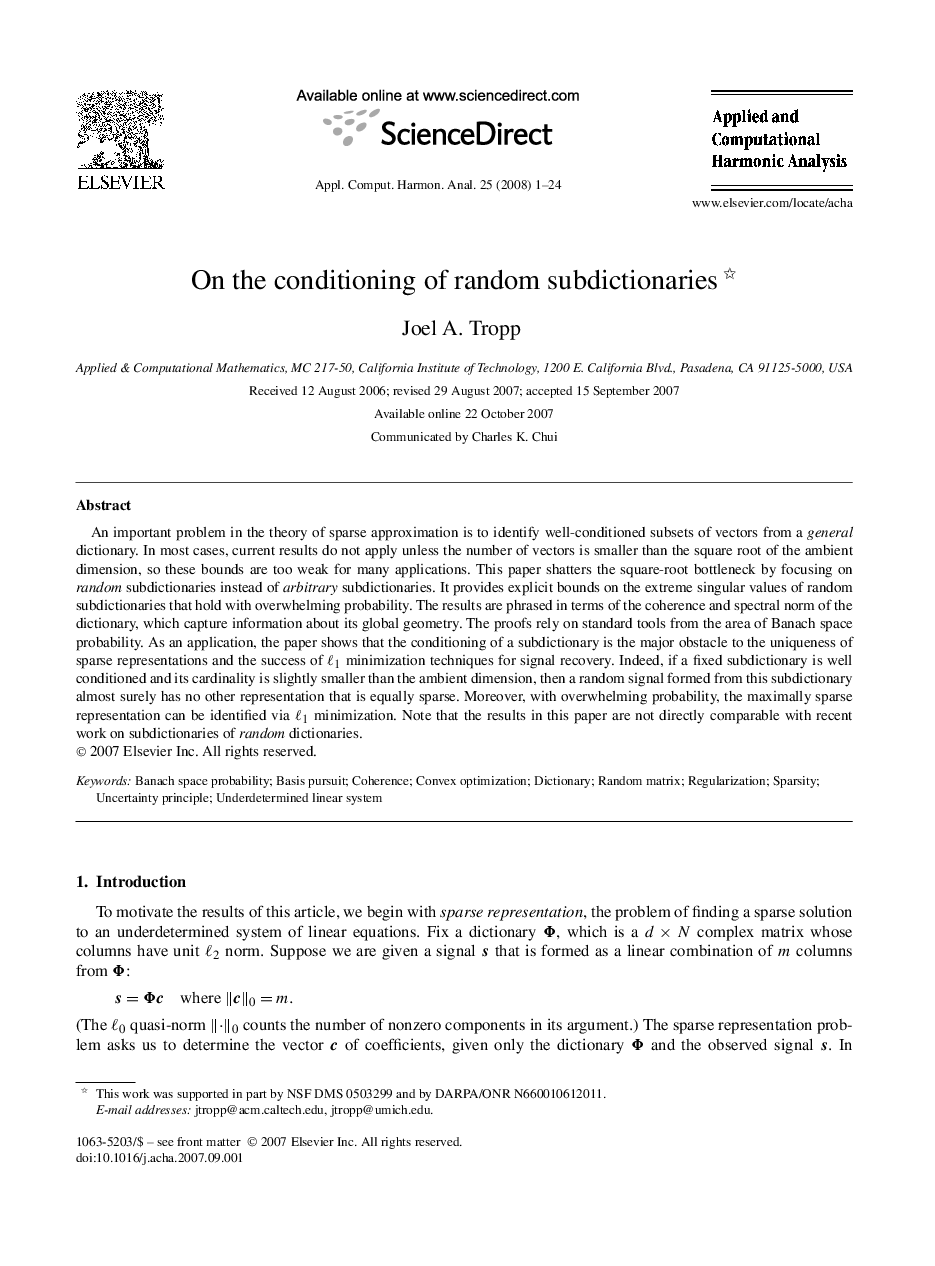| Article ID | Journal | Published Year | Pages | File Type |
|---|---|---|---|---|
| 4605593 | Applied and Computational Harmonic Analysis | 2008 | 24 Pages |
An important problem in the theory of sparse approximation is to identify well-conditioned subsets of vectors from a general dictionary. In most cases, current results do not apply unless the number of vectors is smaller than the square root of the ambient dimension, so these bounds are too weak for many applications. This paper shatters the square-root bottleneck by focusing on random subdictionaries instead of arbitrary subdictionaries. It provides explicit bounds on the extreme singular values of random subdictionaries that hold with overwhelming probability. The results are phrased in terms of the coherence and spectral norm of the dictionary, which capture information about its global geometry. The proofs rely on standard tools from the area of Banach space probability. As an application, the paper shows that the conditioning of a subdictionary is the major obstacle to the uniqueness of sparse representations and the success of ℓ1 minimization techniques for signal recovery. Indeed, if a fixed subdictionary is well conditioned and its cardinality is slightly smaller than the ambient dimension, then a random signal formed from this subdictionary almost surely has no other representation that is equally sparse. Moreover, with overwhelming probability, the maximally sparse representation can be identified via ℓ1 minimization. Note that the results in this paper are not directly comparable with recent work on subdictionaries of random dictionaries.
